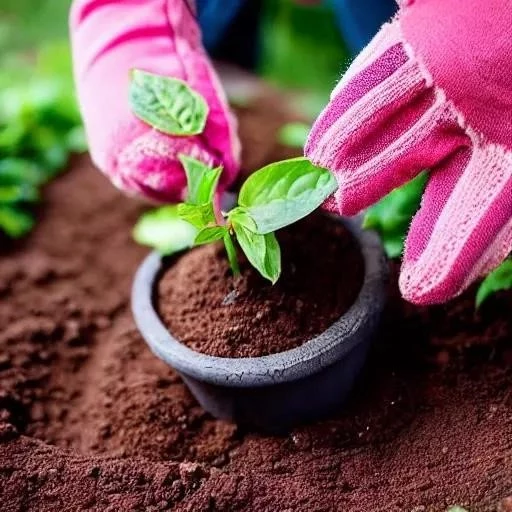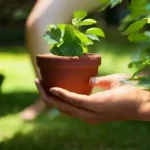Every gardener dreams of a vibrant, flourishing sanctuary, a tapestry of colors and life that transforms an ordinary space into an extraordinary haven. Yet, the journey from a cozy pot to a sprawling garden bed can often feel like a perilous expedition for our delicate floral friends. Many aspiring green thumbs shy away from the critical process of transplanting flowers, fearing root shock or stunted growth. However, with the right knowledge and a dash of optimistic foresight, this essential gardening function becomes not just manageable, but a truly rewarding endeavor, paving the way for breathtaking displays and enduring botanical beauty.
Imagine your garden as a thriving ecosystem, each plant a vital component contributing to its overall splendor. Successfully moving a beloved bloom from its temporary container to its permanent outdoor home is akin to seamlessly integrating a new, brilliant star into a celestial constellation. This transition, when executed with precision and care, ensures the plant’s longevity and unlocks its inherent potential for dazzling growth and abundant flowering. By embracing proven techniques and understanding the subtle needs of your flora, you are not merely relocating a plant; you are actively cultivating a future brimming with natural artistry and ecological harmony.
Here’s a quick guide to foundational steps for ensuring your floral transplants thrive:
| Key Aspect | Description | Benefit to Your Garden |
|---|---|---|
| Compatibility Check | Research your specific plant’s preferred temperature, sunlight, and soil conditions before planting. | Ensures the plant’s survival and allows it to flourish in its new environment. |
| Acclimatization (Hardening Off) | Gradually expose potted plants to outdoor conditions over several days prior to transplanting. | Minimizes transplant shock, helping the plant adapt to new temperature and light levels. |
| Optimal Timing | Transplant during the plant’s dormant period, typically late autumn to early spring, avoiding extreme weather. | Allows roots to re-establish without the stress of active growth or harsh conditions. |
| Soil Preparation | Amend your garden bed soil with compost or other organic matter to improve drainage and nutrient content. | Provides a nutrient-rich, hospitable foundation for robust root development. |
| Proper Digging Technique | Dig a hole slightly larger than the root ball, carefully removing the plant from its pot while keeping the root ball intact. | Protects delicate roots from damage and encourages outward growth into the garden soil. |
| Immediate Post-Care | Water thoroughly immediately after transplanting and consider adding a layer of mulch. | Reduces immediate stress, settles the soil around roots, and helps retain essential moisture. |
Before any significant move, acclimatization, often termed “hardening off,” stands as your plant’s crucial preparatory phase. Just as an athlete trains before a marathon, your potted flowers need to gradually adjust to the harsher realities of outdoor life—fluctuating temperatures, direct sunlight, and brisk winds. Experts at Proflowers Blog emphasize this gentle transition, suggesting you set your potted plants outside for a few days before their permanent relocation. This measured exposure remarkably strengthens their cellular structure, preparing them for the rigors ahead and dramatically reducing the likelihood of transplant shock, a common pitfall that can lead to wilting or even death. Think of it as a botanical boot camp, building resilience one sunny hour at a time;
Crafting the Perfect Home: Site Selection and Soil Enrichment
A successful transplant begins long before the shovel hits the dirt. Understanding your chosen flower’s specific needs—its ideal temperature range, sunlight requirements, and preferred soil type—is paramount. This isn’t just about survival; it’s about enabling spectacular growth. As Gardenworks advises, providing “beautiful plants, garden supplies, pottery & home décor plus expert advice” starts with foundational knowledge. Once you’ve identified the perfect sunny spot or dappled shade, focus intently on the soil. Enriching your garden bed with high-quality compost or organic matter creates a welcoming, nutrient-dense environment. This carefully prepared substrate acts like a luxurious new mattress for your plant, offering optimal drainage and essential nourishment, thus empowering its roots to spread confidently and absorb vital resources.
The Delicate Dance: Executing the Transplant Itself
With your site prepared and your plant acclimated, the moment of truth arrives. Dig a hole in your prepped garden bed that is just a bit wider and no deeper than your plant’s root ball. This provides ample space for the roots to expand without burying the crown too deeply, which can lead to rot. Carefully remove the plant from its pot, gently teasing apart any circling or matted roots—a vital step for encouraging outward growth into the new soil, as advised by numerous gardening experts. Position the flower in the center of the hole, ensuring the top of the root ball is level with the surrounding soil. Then, backfill with your enriched garden soil, lightly firming it around the base to eliminate air pockets, which can dry out roots. This meticulous process ensures a secure and nurturing foundation for future prosperity.
Nurturing New Beginnings: Post-Transplant Care for Lasting Beauty
The journey doesn’t end when the flower is in the ground; in fact, it’s just beginning. Immediate and consistent post-transplant care is incredibly effective in cementing success. Water your newly transplanted flower thoroughly, allowing the water to deeply penetrate the soil and settle around the roots. This crucial initial watering helps to remove any remaining air pockets and provides much-needed hydration to stressed roots. Subsequently, maintain a regular watering schedule, especially during dry spells, until the plant is visibly established. Applying a layer of organic mulch around the base will help retain soil moisture, regulate temperature, and suppress weeds, giving your newly settled flower a competitive edge. By integrating these insights, your garden will not only survive but truly thrive, blossoming into the vibrant haven you’ve always envisioned.






